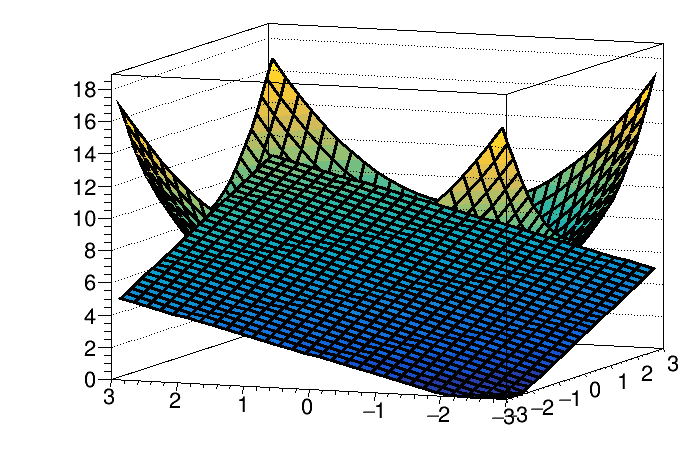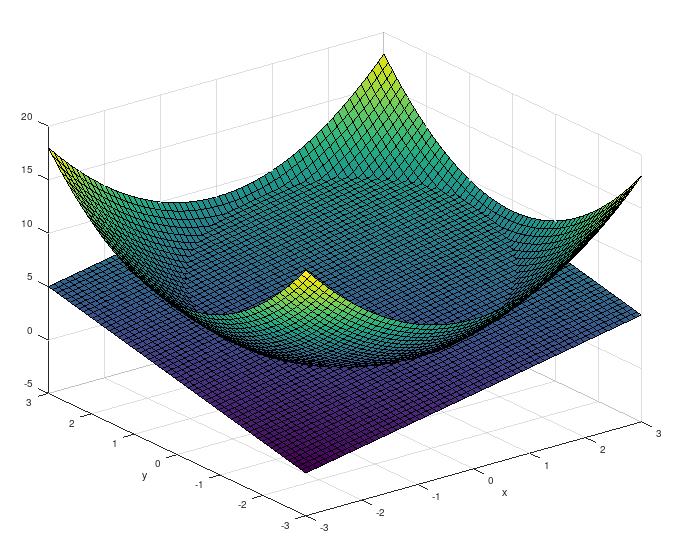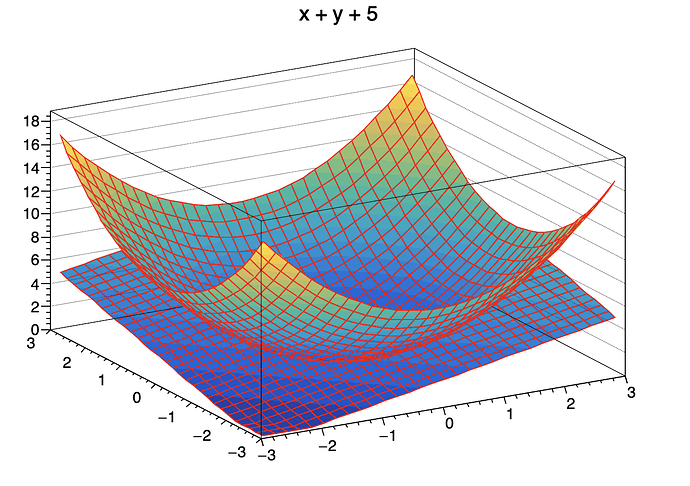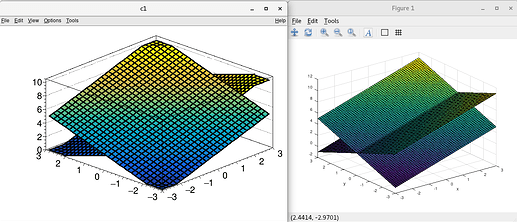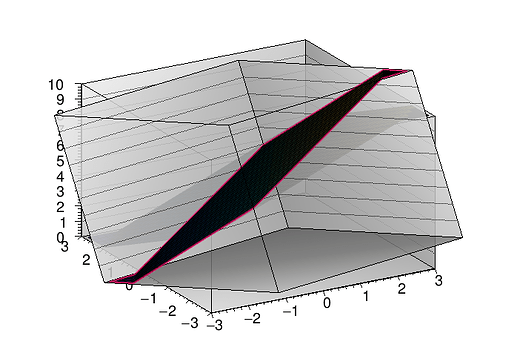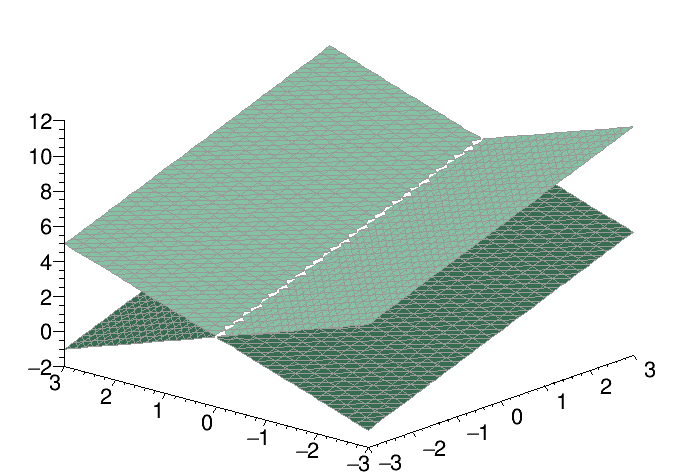Ako_b
February 7, 2023, 1:38pm
1
Hello!TGraph2D with TRI1 option and its fit with TF2 with SURF1 option.
{
TF2 f1("f1", "x^2 + y^2", -3, 3, -3, 3);
TF2 f2("f2", "x + y + 5", -3, 3, -3, 3);
f1.Draw("surf1");
f2.Draw("surf1 same");
f1.SetMinimum(0.0);
f1.SetMaximum(18.0);
f2.SetMinimum(0.0);
f2.SetMaximum(18.0);
}
However, I get this:
Currently I have to export data to Octave, where I can get nice plots like this:
where I can clearly see if fitted surface matches data.
Is there any way to draw multiple surfaces properly in ROOT?
Please read tips for efficient and successful posting and posting code
ROOT Version: 6.26/06Platform: CentOS 7 x86_64Compiler: gcc (GCC) 12.2.0
couet
February 7, 2023, 2:39pm
2
void ako()
{
auto f1 = new TF2("f1", "x^2 + y^2", -3, 3, -3, 3);
auto f2 = new TF2("f2", "x + y + 5", -3, 3, -3, 3);
f1->SetMinimum(0.0);
f1->SetMaximum(18.0);
f2->SetMinimum(0.0);
f2->SetMaximum(18.0);
f2->Draw("surf1");
f1->Draw("surf1 same");
}
Ako_b
February 7, 2023, 3:10pm
3
Thanks for your response, @couet ! My apologies, probably my first example is a bit misleading. Here’s a more obvious one.
void ako()
{
TF2 f1("f1", "x - y + 5", -3, 3, -3, 3);
TF2 f2("f2", "x + y + 5", -3, 3, -3, 3);
f1.SetMinimum(0.0);
f1.SetMaximum(10.0);
f2.SetMinimum(0.0);
f2.SetMaximum(10.0);
f1.Draw("surf1");
f2.Draw("surf1 same");
}
What I get vs what I expect:
I mean, seems like order of Draw calls doesn’t matter here. Am I missing some simple option?
couet
February 7, 2023, 4:08pm
4
Ah yes, this will not work. The two surfaces ignore each other.ROOT: THistPainter Class Reference
1 Like
Ako_b
February 10, 2023, 9:41am
5
Sorry for late reply.TGLHistPainterSAME option doesn’t work properly.
void ako() {
gStyle->SetCanvasPreferGL(true);
TF2 f1("f1", "x - y + 5", -3, 3, -3, 3);
TF2 f2("f2", "x + y + 5", -3, 3, -3, 3);
f1.SetMinimum(0.0);
f1.SetMaximum(10.0);
f2.SetMinimum(0.0);
f2.SetMaximum(10.0);
f1.Draw("glsurf1");
f2.Draw("glsurf1 same");
}
Regarding TF3
{
auto f3 = new TF3("f3","(x - y + 5 - z) * (x + y + 5 - z)",-3,3,-3,3,-2,12);
f3->SetFillColor(30);
f3->SetLineColor(15);
f3->SetNpz(100);
f3->Draw("fb bb");
}
However, it’s not clear how to apply it to my case of visual comparison of
TGraph2D and its fit with
TF2. I need to convert
TGraph2D into implicit 3d function somehow.
So far, I will just continue to use Octave as simplest solution.
couet
February 10, 2023, 11:21am
6
With TGraph2D you cannot have surfaces with several z values for one (x,y) pair.
system
February 24, 2023, 11:21am
7
This topic was automatically closed 14 days after the last reply. New replies are no longer allowed.
